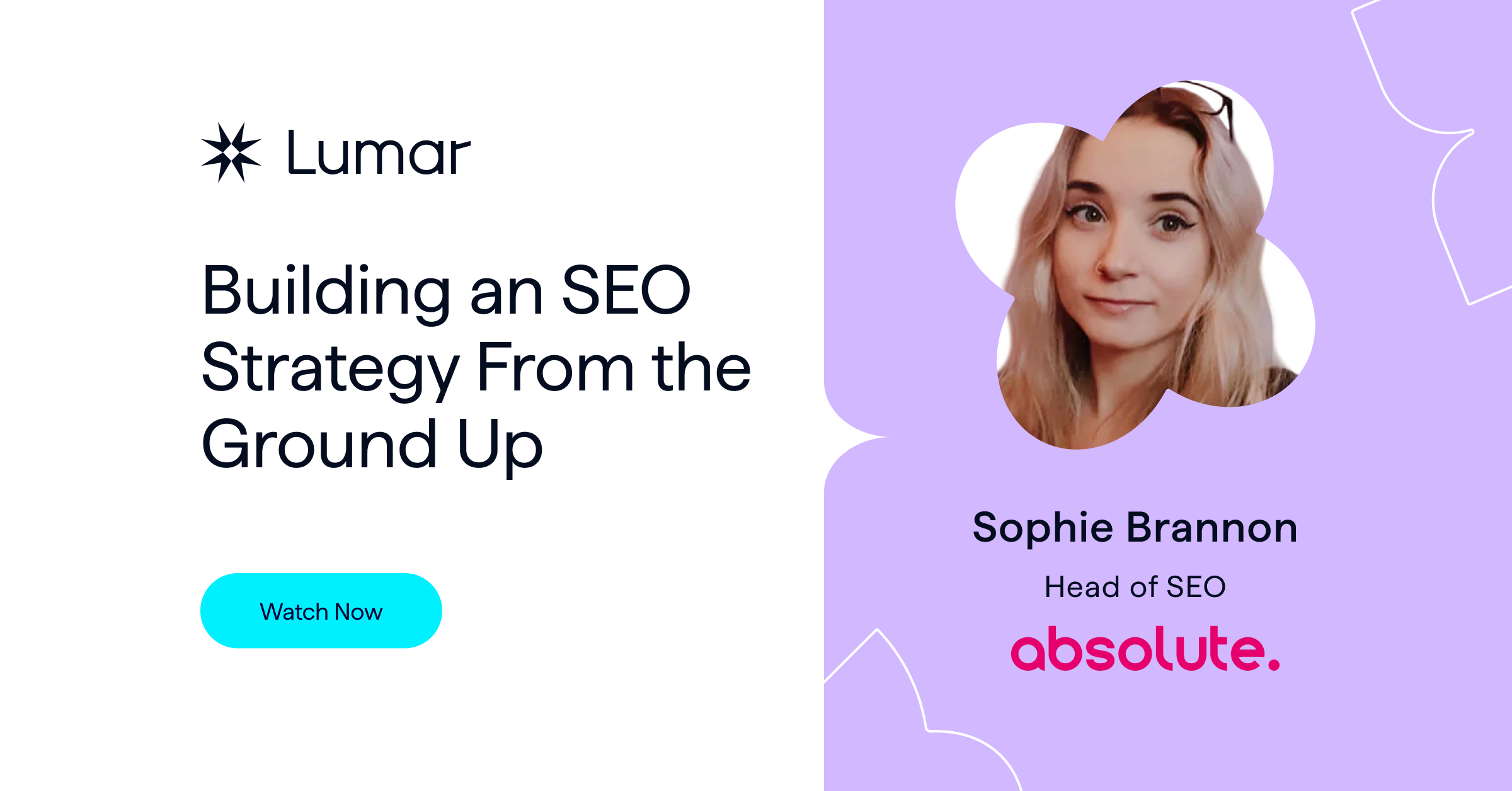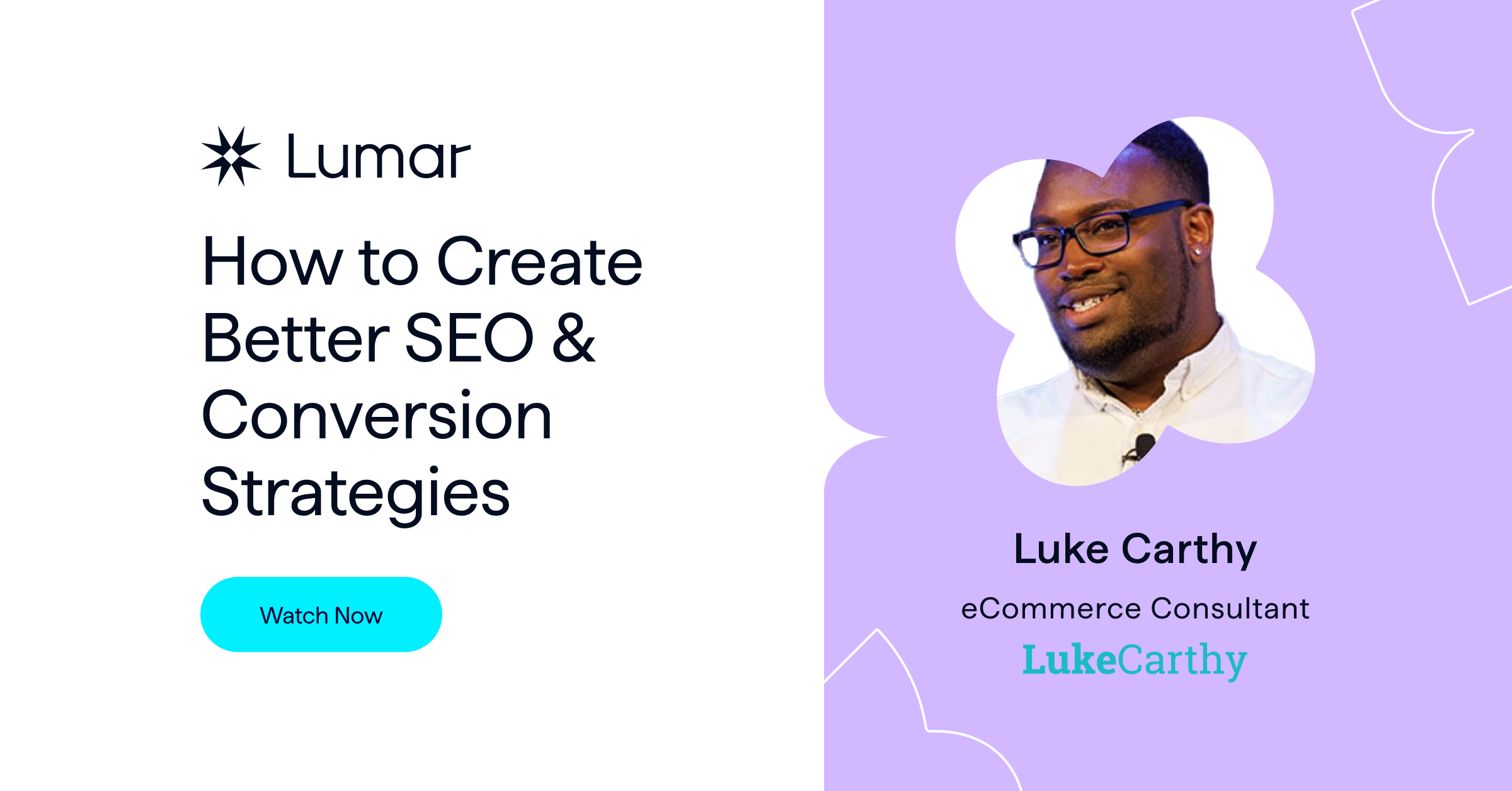Learn how to build an SEO strategy when you’re managing multiple websites in this on-demand Deepcrawl webinar.
Last week, we were pleased to welcome Jeff Root of California-based automotive lifestyle brand Hoonigan. After Hoonigan joined the larger Wheel Pros family of brands, Root took on SEO responsibilities for 30+ brands’ websites. The two discuss how to navigate search engine optimization strategies within complex multi-site environments.
Watch the full webinar session (including Q&A!) above, or read on for some key takeaways and tips for managing SEO across multiple sites.
Navigating search marketing in a complex multi-site environment
In the past couple of decades, Wheel Pros has scaled up its business in a major way. Root now oversees B2C eCommerce sites, B2B sites, and distributor sites all operating under the same parent company. When it comes to search, many of these websites could be competing for the same keywords and phrases and it is easy to see how some sites may well be cannibalizing visibility for others.
“At the paid search level you get a ton of internal competition for brand terms,” Root said. “What we try to do is rationalize across the entire portfolio — where do we earn traffic for brand search vs. where do we earn traffic for paid search? And are we earning it internally or are we competing with, for example, our partners?”
“We don’t want to have four or five internal sites plus business partners all bidding on the same terms, because the only winner there is Google,” he added.
One important aspect of managing SEO across a portfolio of sites and helping to avoid keyword cannibalization is understanding the distinction between brand and non-brand search traffic — and which type moves the needle most for a particular site. Taking data from Google Search Console and displaying it in Google Data Studio to split out brand vs. non-brand traffic helps Root’s SEO team get insights into which sites are earning a significant amount of brand traffic, which are growing more from non-branded search terms, and where opportunities for changes in tactics exist. Brand traffic can be easier to get, but it requires first establishing brand awareness in the market; lesser-known brand names may need to rely more on non-branded traffic until they have generated more awareness. Knowing how these different types of traffic are working across your portfolio of websites is a key part of developing and updating your SEO strategies over time.
Moving all search efforts in-house at Wheel Pros has been a major boon for the multi-site digital team. Having in-house SEO and digital marketing teams gives the digital team a closer relationship with what is going on in both paid and organic search and helps them manage their efforts with agility and a full understanding of the bigger picture.
Having a Chief Digital Officer in place at WheelPros has also been a game changer in terms of managing SEO across multiple brand sites. Having someone in the C-Suite who already understands the importance of SEO and digital marketing channels helps expedite getting things done.
This internal structure of in-house digital teams and a clued-in CDO means getting everybody on the same page is more straightforward than it might otherwise be. It also ensures the company can act quickly in the face of industry changes.
How to create an SEO strategy across a portfolio of websites
Root has an SEO roadmap for the next five quarters. When creating their SEO roadmap, they assess the full portfolio of Wheel Pros websites across a range of criteria including indexed pages, page rankings, site speed, and other metrics. Then the team prioritizes those areas that need the most help or the ones that are strategically most important for the wider business. Having a shared source of truth for all of the websites’ technical health and search performance provides a ‘matrix view’ of the whole portfolio of sites and helps the team align on their SEO strategy and roadmap.
Understanding the cyclical nature of the different brands is also important so you can work a few quarters ahead of what’s coming. For example, B2C websites in the automotive space may experience more traffic and sales in the spring as the weather gets nicer and consumers want to spend more time in the garage working on their cars, while B2B buying cycles may operate on a different calendar.
“For us, the spring is very important because that’s when people start working on their cars,” Root said. “We look at our strategic sales periods and try to schedule our development to happen before then, not during.”
Onboarding a website intelligence platform
But getting the staff and the roadmap aligned is just one part of the puzzle — having the right tools in place is another key part of managing a multi-site SEO strategy. So, how does Root handle all the tools in use across the Wheel Pros sites and get to a point of standardizing them across the business?
“We’re constantly looking at what our tech stack looks like, what our marketing stack looks like,” he says. “Whenever a new site or new business is acquired, they’re going to come with a new stack, so we look at that against [our existing tools].”
“Shameless plug for Deepcrawl, but we’re really confident in this tool, we really like using this tool… we look at the reporting produced from that and then we measure it up against what other folks or what SEO teams at a newly acquired business are looking at. We get together and try and rationalize that. We look for ways to merge talent and tools. We’re really into creating shared learnings across the different business units.”
Root suggests gaining as much experience with as many tools as possible.
“The more you can understand the pros and cons of each,” he says, “the better you can rationalize what you need to keep and what you don’t need to keep, and what the overlap is between tools.”
When it comes to aligning stakeholders, Root urges brands to work backward from the data and to present it in a rational way to all. This is where brand vs. non-brand is really important.
“Brand is very easy, generally speaking, to earn traffic for,” he says. “But you have to create brand awareness to get people to search for that brand. Non-brand is where the real competition for SEO is. That’s where you attract people top-of-funnel; you can even get people middle and bottom-of-funnel with non-brand words.”
Sharing SEO insights with other teams in the business, such as marketing, developers, and the C-suite helps align strategies toward common goals.
When communicating the value of SEO to the C-suite, he says, “I try to show as much data, in the simplest way — executive summary style.”
Once you can offer data visibility to the stakeholders in a way they understand, you can more easily do the diagnostics, iterate, and show ROI.
Future-proofing for technical SEO success
Publishing an easy-to-digest SEO roadmap that clearly shows what the plan is for the next 4-5 quarters to the entire business helps secure future buy-in for website projects. Stakeholders can see the plan for all of the websites in the business’ portfolio in one place.
“For us, bringing paid search in-house was a real game-changer for us. It allowed us to spend less on brand and use that same budget elsewhere, either for paid social, or for different parts of the funnel. Reallocating spend by not having to bid on brand terms was huge for us, and we were only able to do that because we brought it in-house.”
Creating inter-channel alliances across digital teams can also help future-proof SEO efforts, create better strategies, and secure buy-in. Creating a team culture where there are shared learnings across the different channel teams like SEO, paid search, and paid social, and having an operational structure where all of those channels roll up to the same leaders (including the C-Suite) helps the teams leverage their efforts and work better together. Everyone is aware of what all of the channels are up to, and what’s working.
For Wheel Pros, SEO is one of the components of their overall brand health program. There is an understanding across the organization that without investment in a solid SEO strategy, money is liable to be wasted and certain sites will fail to reach their full potential.
Understanding and demonstrating to other stakeholders how SEO influences other marketing channels is also important. SEO can help move people into additional channels, says Root.
“I really like using organic search to get people to sign up for email and get them into our CRM system. I see that as a key conversion — especially if we’re doing offer-driven [tactics], SMS and email can really drive that.”
Root’s closing thoughts turn to the future of SEO more broadly. Over a twenty-year career in SEO and digital marketing, Root has seen more widespread acceptance of SEO as a core part of digital marketing.
“The premise is still the same,” he concludes. “If you’re going to make a website, you may as well make one that can earn traffic.”





